In a recent leadership session, leadership expert Frank Koo challenged participants to rethink the balance between short-term performance and long-term development. He emphasized that true leadership transformation isn’t just about hitting quarterly targets—it’s about empowering people to grow, adapt, and thrive over time.
The concept of transformational leadership, first introduced by James MacGregor Burns and later developed by Bernard M. Bass, centers on inspiring relationships between leaders and followers that elevate motivation, trust, and respect.
Here are the leadership transformation insights Frank shared—and how you can apply them.
Effective transformational leaders are defined by key traits such as authenticity, self-awareness, humility, collaboration, and interdependence, which will be explored in the following sections.
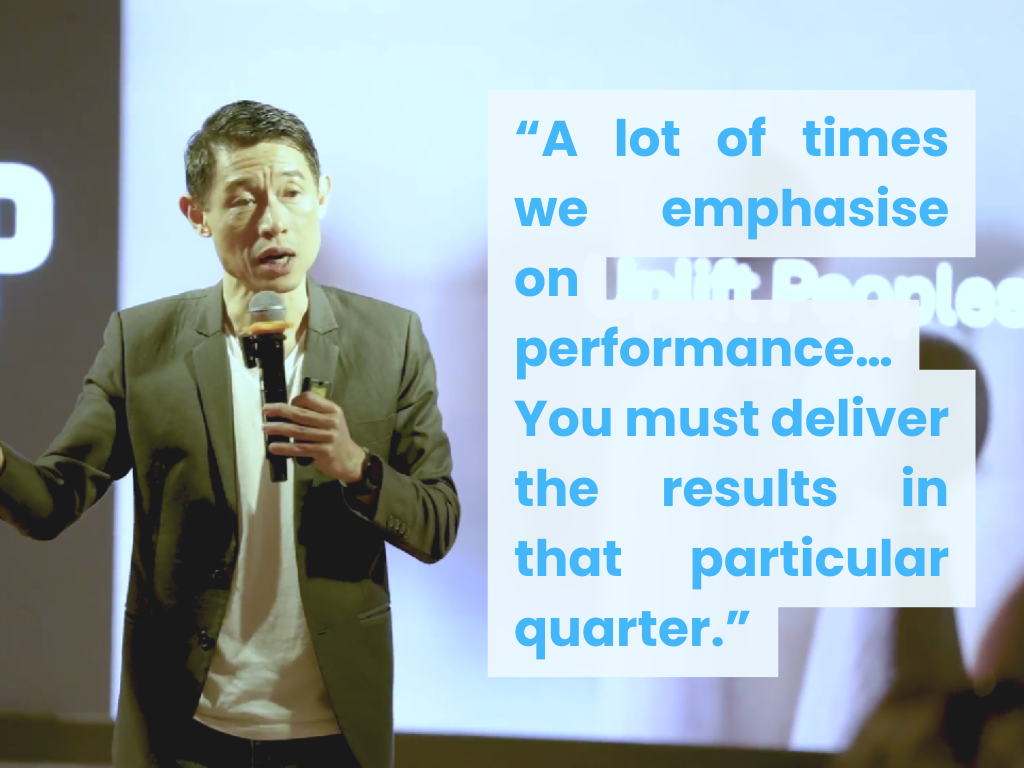
“A lot of times we emphasise on performance… You must deliver the results in that particular quarter.”
Performance metrics are vital. But Frank warns: when performance becomes the only focus, innovation, growth, and deeper leadership development are neglected. This narrow approach can limit positive organizational outcomes, such as innovation, productivity, and long-term success, which are essential for sustained organizational growth.
Leadership transformation occurs when teams are built not just to meet targets—but to evolve, learn, and become stronger quarter after quarter.
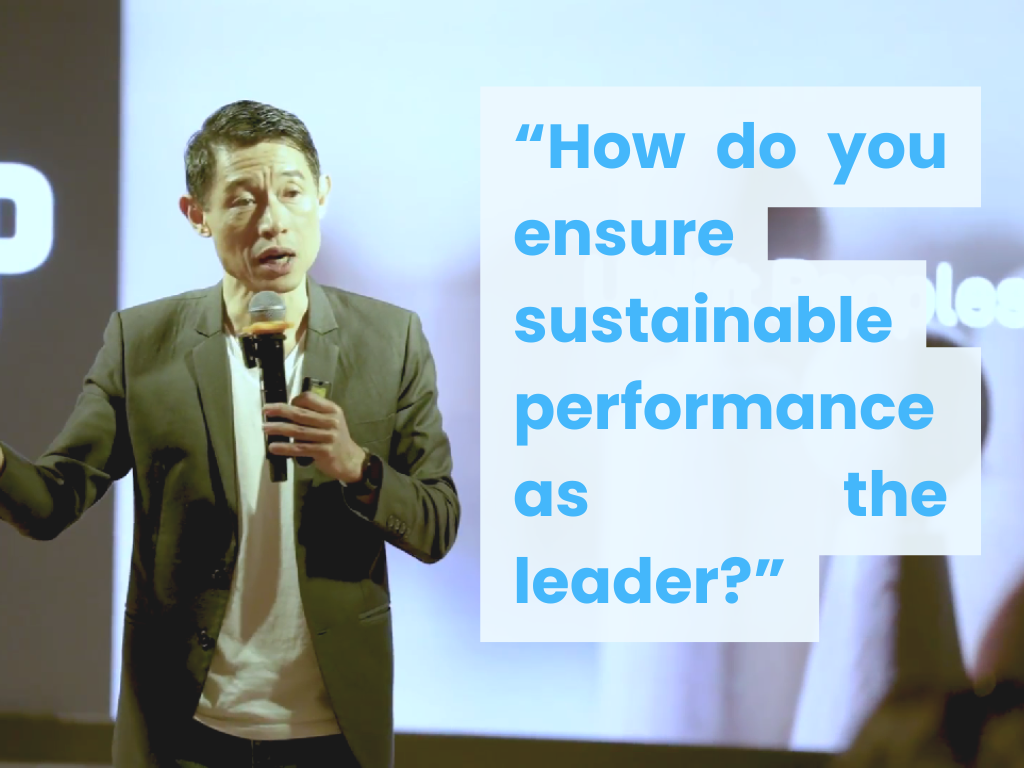
“How do you ensure sustainable performance as the leader?”
Frank urges a shift from short-term success to long-term leadership transformation. The question isn’t “Can you deliver results?” but “Can you build an environment where others consistently improve?”
That’s transformation—creating the conditions for growth, not just output.
Leadership transformation also supports personal development, which is essential for sustained team and organizational growth.
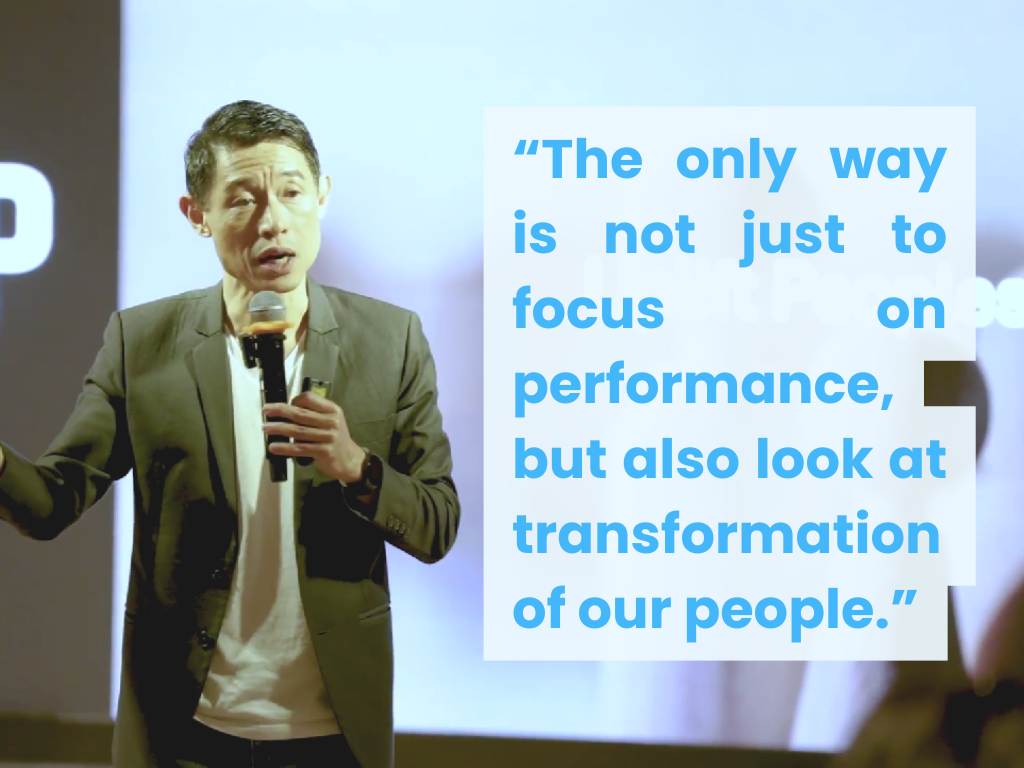
“The only way is not just to focus on performance, but also look at transformation of our people.”
This is the heart of leadership transformation: moving beyond tasks and into talent and capability elevation.
It’s the difference between managing outcomes and cultivating potential by recognizing and supporting the unique strengths and aspirations of individual followers. Leaders who prioritize people development are architects of sustainable change.
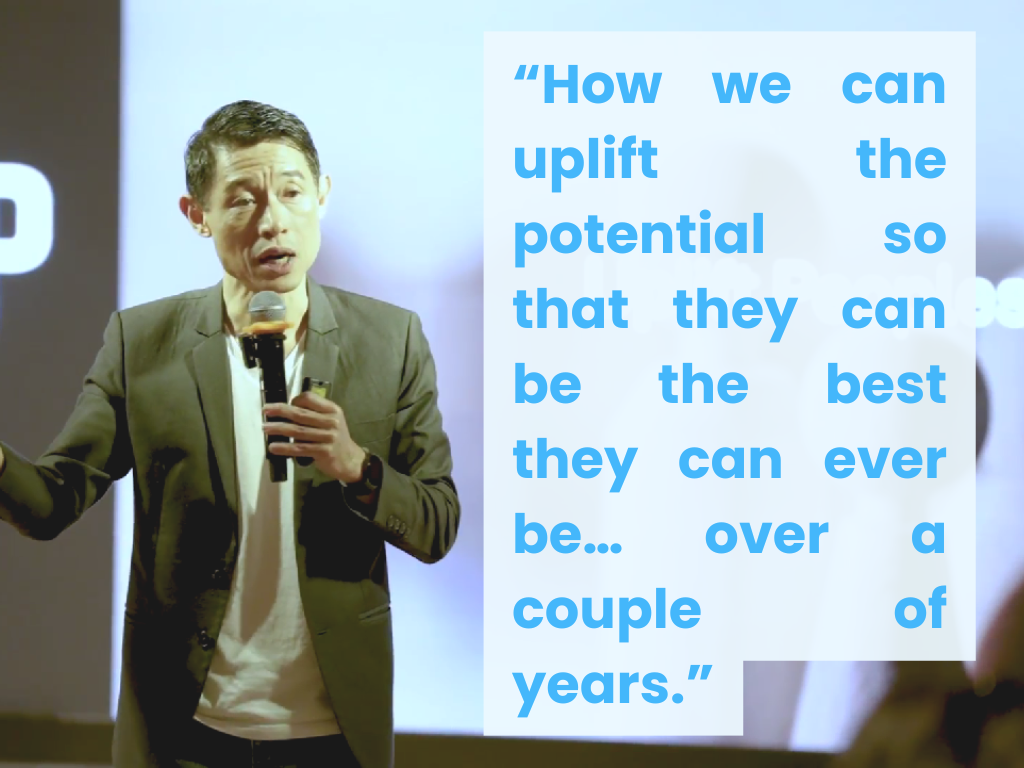
“How we can uplift the potential so that they can be the best they can ever be… over a couple of years.”
Transformation takes time. According to Frank, real leadership transformation happens over seasons—not sprints, through intentional, ongoing investment in people.
Sustained investment in people encourages proactive behavior, enabling teams to adapt and thrive over time.
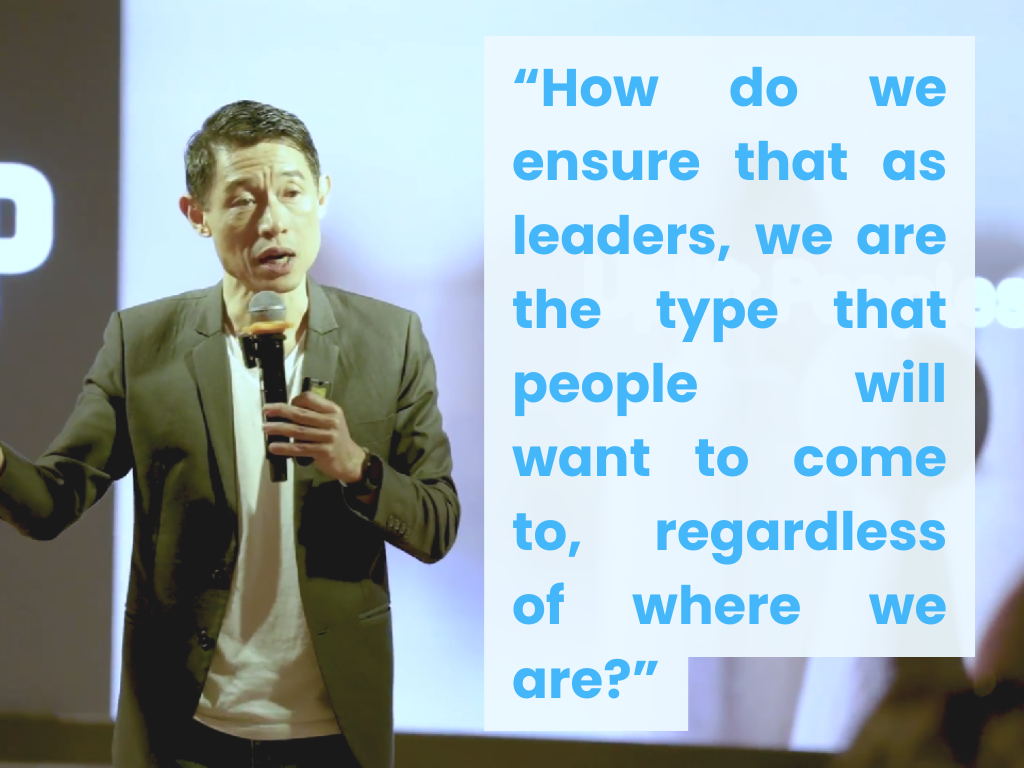
“How do we ensure that as leaders, we are the type that people will want to come to, regardless of where we are?”
At its core, leadership transformation is relational. It’s not about your position—it’s about your presence.
True transformational leaders are those people would follow without the title—because they add value, inspire trust, and create growth.
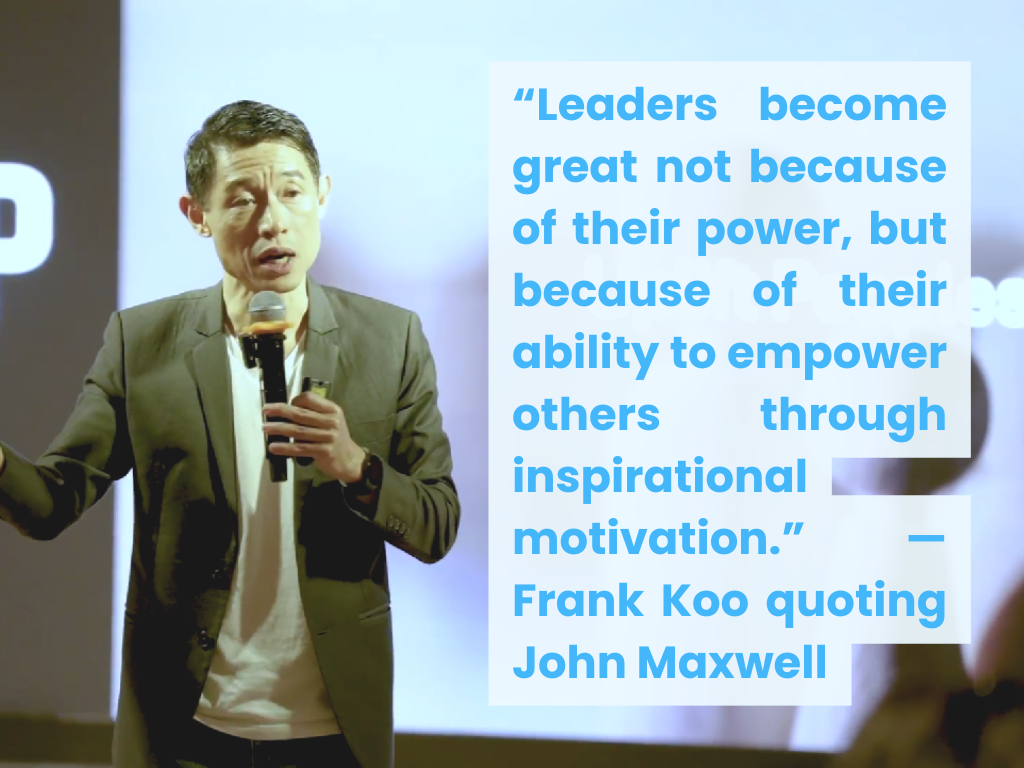
“Leaders become great not because of their power, but because of their ability to empower others through inspirational motivation.” — Frank Koo quoting John Maxwell
Leadership transformation hinges on empowerment. As John Maxwell teaches—and Frank echoes—it’s not about authority, but about influence and growth.
Leaders act intentionally to empower and mentor others, fostering a culture of growth within their teams.
Leaders who equip others to lead create lasting impact.
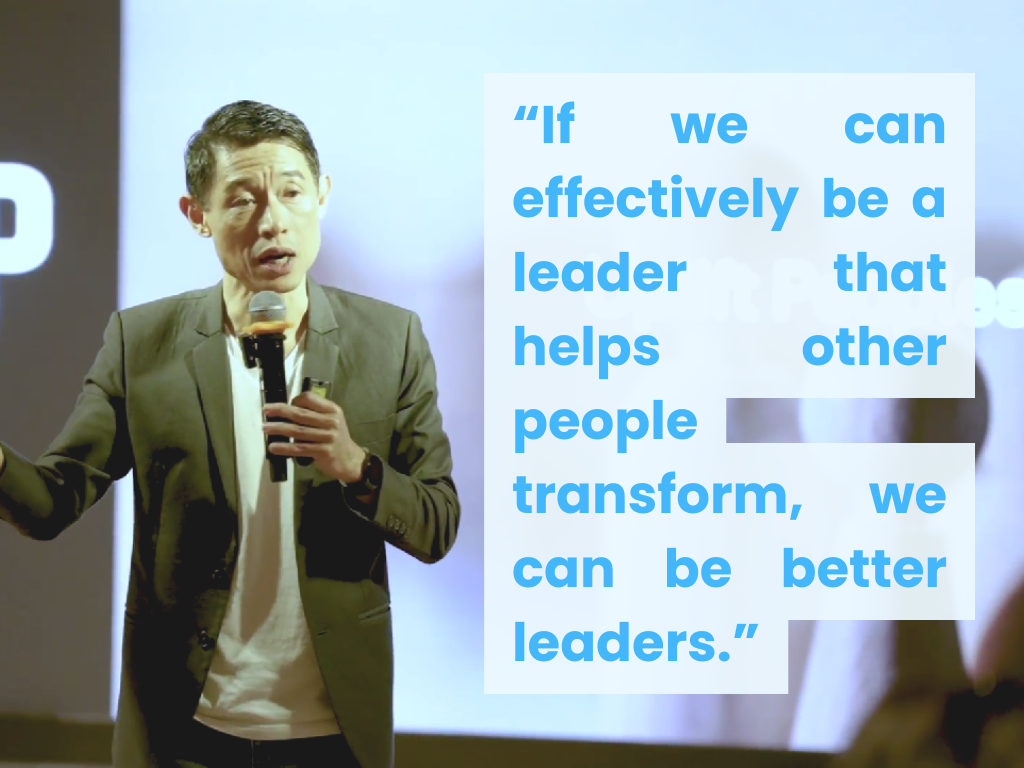
“If we can effectively be a leader that helps other people transform, we can be better leaders.”
Transformation is reciprocal.
Frank’s belief: as others evolve, leaders evolve too. By investing in others, you are investing in yourself and the systemic transformation of your team, as transformational leaders encourage others to look beyond self-interest for the benefit of the team.
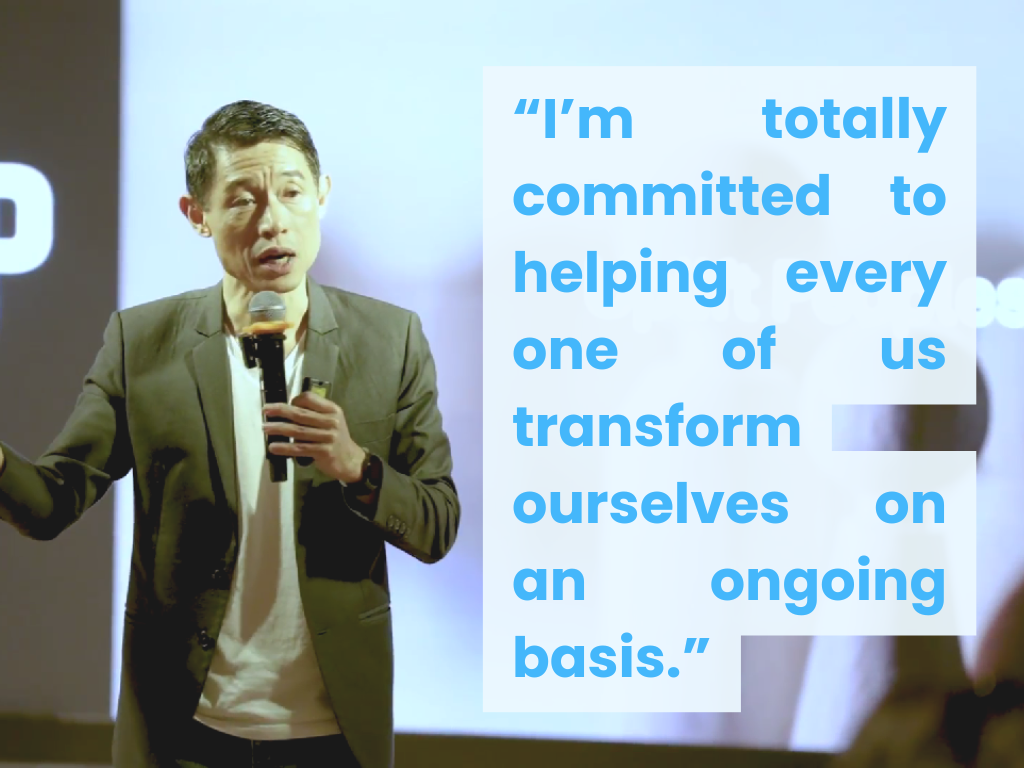
“I’m totally committed to helping every one of us transform ourselves on an ongoing basis.”
Leadership isn’t a role—it’s a commitment.
Frank models what leadership transformation looks like when it’s central to identity. He doesn’t just coach transformation—he lives it, fostering a strong sense of shared purpose and values within his teams.

What is Transformational Leadership?
Leadership transformation is the process through which leaders evolve from task managers into talent developers and culture-builders. It goes beyond performance—it fosters growth, capability, and adaptability within teams. The concept of transformational leadership, first introduced by James MacGregor Burns, emphasizes the inspiring relationship between leaders and followers that elevates moral and motivational levels. This transformational leadership style, or transformational style, is recognized as an effective approach for fostering growth and innovation across industries.
Transformational leadership theory, developed further by Bernard M. Bass, remains highly relevant to modern leadership practices. Bass’s transformational leadership theory expanded on Burns’s initial concept by introducing measurable criteria and highlighting the importance of trust, admiration, and inspiration in effective leadership.

This leadership style aligns closely with principles of transformational leadership, originally defined by James MacGregor Burns and later expanded into the “Four I’s”: idealized influence, inspirational motivation, intellectual stimulation, and individualized consideration. These four components of transformational leadership are essential for understanding how leaders can motivate and develop their teams.
While transformational leadership is highly effective, it is important to consider other leadership styles and how they compare. In particular, transformational and transactional leadership are often discussed as interconnected approaches, each playing a distinct role in influencing organizational effectiveness and leadership development.
Why Focus on Leadership Transformation?
Top leaders and organizations recognize transformation as a core driver of long-term success. Transformational leaders align team efforts with organizational goals and the organization’s mission, ensuring that every initiative supports the broader objectives and shared purpose of the company. They also ensure their actions are consistent with the organization’s values, fostering trust and commitment among employees. Understanding organizational dynamics is crucial for leaders to effectively navigate change and achieve desired organizational outcomes.
According to AlixPartners, transformational leaders build resilience, adaptability, and emotional intelligence—a triad that creates a powerful change engine features.alixpartners.com. From McKinsey’s research, behavioural transformation is essential for profitable growth and cultural change
How Do Transformational Leadership Skills Work?
Clarify Vision and Purpose – Inspire others with a meaningful “why.” A clear vision and inspiring vision are essential to motivate followers, helping them understand the direction and purpose behind their efforts.
A leader’s vision aligns the team with the organization’s mission, fostering unity and commitment toward shared goals.
- Lead by Example – Model behaviour you expect from others.
- Strengthen Others – Coach, support, and grow individual capabilities.
- Challenge the Status Quo – Encourage innovation and open dialogue.
- Reinforce and Recognize – Validate development and individual milestone shifts—a strong alignment with Kouzes & Posner’s practices. Transformational leaders motivate followers to embrace change and adopt a transformational approach to challenges.
Understanding Leadership Styles
Transformational leadership stands out as a leadership style that goes beyond managing day-to-day tasks—it’s about inspiring and motivating employees to reach their highest potential and contribute to organizational success. Transformational leaders focus on creating a clear and compelling vision that energizes their teams, encouraging everyone to work toward shared goals. This approach is rooted in motivating employees not just through rewards, but by fostering a sense of purpose and ownership in their work.
In contrast, transactional leadership relies on a more traditional system of rewards and penalties to drive performance. While transactional leaders focus on maintaining the status quo and ensuring tasks are completed, transformational leaders are catalysts for change, growth, and innovation. Understanding these leadership styles is essential for anyone aiming to practice effective leadership, as the ability to inspire and empower others is what truly sets transformational leaders apart in today’s dynamic business environment.
Leadership Model and Organizational Alignment
The transformational leadership model, as developed by Bernard M. Bass, is built on four foundational components: idealized influence, inspirational motivation, intellectual stimulation, and individualized consideration. These elements work in harmony to create a leadership style that not only drives performance but also nurtures the growth and well-being of every team member.
Effective transformational leaders use this model to align their leadership style with the organization’s mission, values, and strategic goals. By embodying idealized influence, they serve as role models who inspire trust and respect. Through inspirational motivation, they articulate a vision that excites and unites their teams. Intellectual stimulation encourages creative problem-solving and innovation, while individualized consideration ensures that each follower’s unique needs and aspirations are supported. This alignment between leadership approach and organizational objectives is crucial for achieving organizational effectiveness and sustaining long-term success.
Driving Innovation and Growth
Transformational leaders are instrumental in driving innovation and growth within organizations. By fostering an environment where critical thinking and creativity are valued, these leaders encourage their teams to generate new ideas and explore unconventional solutions. Intellectual stimulation—a core component of transformational leadership—challenges followers to question assumptions and embrace innovative thinking.
This proactive approach helps organizations remain competitive in rapidly changing markets. Effective transformational leaders not only champion new ideas but also invest in the personal growth and professional development of their team members. By providing opportunities for learning and advancement, they ensure that their teams are equipped to meet future challenges and contribute to the organization’s ongoing success.
Embracing Change and Uncertainty
In times of change and uncertainty, transformational leaders shine by leveraging their vision and communication skills to guide and motivate their teams. They understand that adaptability and resilience are essential for organizational survival and growth. By promoting a culture that welcomes new ideas and encourages calculated risk-taking, transformational leaders help their organizations navigate shifting landscapes and seize emerging opportunities.
Effective transformational leaders also prioritize the well-being of their followers, offering emotional support and encouragement during periods of transition. This focus on emotional intelligence and support not only helps team members cope with uncertainty but also strengthens their commitment to the organization’s mission and goals. By creating a positive and supportive work environment, transformational leaders ensure that their teams remain engaged, motivated, and ready to embrace whatever the future holds.
Leadership Transformation in Action
Examples include:
- A manager inspiring innovation by empowering team experimentation
- A department head creating psychological safety to facilitate honest collaboration
- A mentor helping team members identify and act on their strengths
These tactics echo leadership transformation’s focus on empowerment and high performance. In contrast, a transactional leadership approach centers on clear structures, routine supervision, and motivating through rewards or punishments. A transactional leader typically prioritizes immediate results and addresses issues by focusing on self interests and compliance, rather than inspiring teams to pursue a collective vision. The transactional approach is effective in situations requiring efficiency and short-term goal achievement, but differs from the transformational style, which emphasizes long-term motivation and team development.
Final Thought
Frank Koo’s message is clear: true leadership transformation isn’t in meeting today’s numbers—it’s in building tomorrow’s leaders.
Transformation is a process: vision becomes growth, pressure becomes development, and performance becomes legacy.
To lead well is to uplift others. And that is the essence of leadership transformation. Invest in your transformational leadership skills and leadership skills through transformational leadership training to ensure long-term success.
Frequently Asked Questions
1. What is the definition of leadership transformation?
Leadership transformation is the continuous evolution of leaders and teams—shifting from task completion to culture cultivation, capability building, and strategic empowerment.
2. Why is leadership transformation important in today’s business?
Because adaptive, resilient teams—not just high-performers—are what sustain organizations through disruption, innovation, and long-term growth.
3. What distinguishes leadership transformation from other leadership approaches?
Unlike transactional leadership focused on rewards or authority, leadership transformation focuses on motivation, purpose, and collective development
4. How can an emerging leader begin fostering transformation as a transformational leader?
Start by aligning actions with purpose, listening deeply, coaching consistently, and creating space for team members to step up and lead.
5. How do you measure leadership transformation?
Use behavioral metrics, growth milestones, team sentiment, innovation contributions, and leadership self-assessments. Focus on development, not just delivery.

A trailblazer in humanising leadership and building high-resilience teams. As a former United Nations Peacekeeper, he leverages his high-stakes experience to redefine leadership dynamics. With a career distinguished by numerous accolades, Joseph now helps organizations thrive through a human-centric approach, enhancing performance, productivity, and workplace culture.







